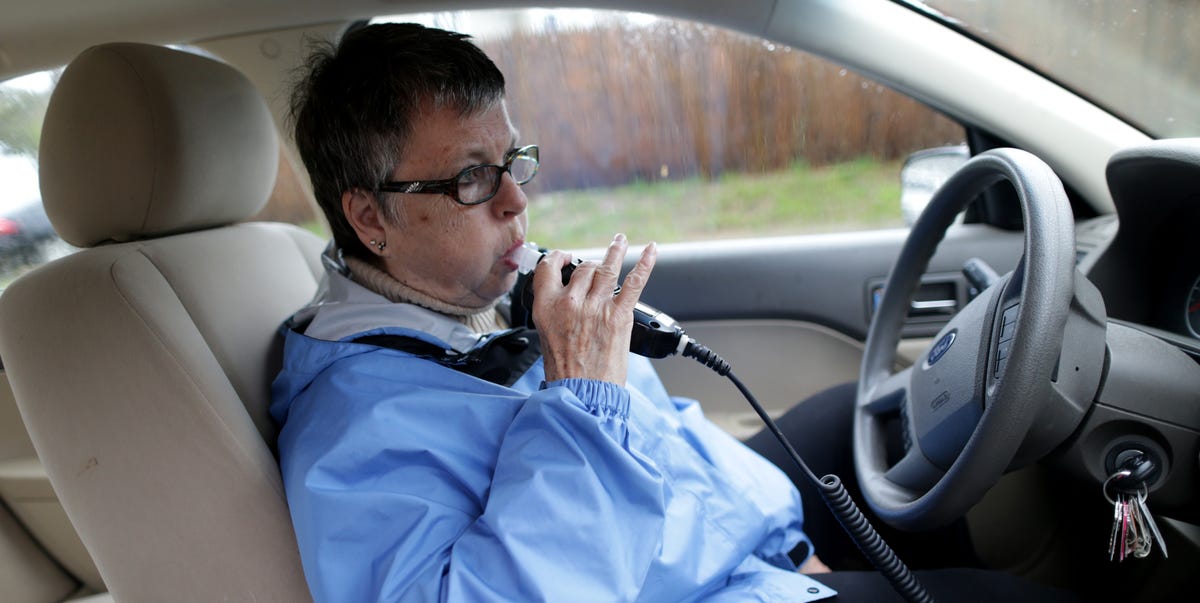
- In-car Breathalyzers are nothing new, and their use has almost tripled in the U.S. in the past decade.
- Ignition Interlock Devices (IIDs), as they’re technically known, sometimes require drivers to blow into them while the car is being operated. And this can distract them, just as a cellphone can, with a New York Times investigation revealing dozens of IID-related accidents.
- Even as more states look to requiring IIDs for drunk driving convictions, few people are looking at the distracting effects.
It’s not difficult to find someone touting the benefits of the interlock device to detect and foil a person trying to drive under the influence of alcohol. Something that is less often touted is the fact that drivers can be asked to work with this device while they are piloting a moving vehicle, and that has dangers of its own.
LifeSafer, a company that sells these in-car Breathalyzers, points to the widespread use of ignition interlock devices (IIDs) by government vehicles in Sweden and says this is a trend the U.S. should follow. The Centers for Disease Control and Prevention (CDC) is in favor, too, saying IIDs “reduce repeat offenses for driving while intoxicated (DWI) by about 70 percent while they are installed” and offers eight tips to states that want to strengthen their IID programs. And a 2016 study by the Leonard Davis Institute of Health Economics at the University of Pennsylvania found that requiring ignition interlocks for people who were convicted of driving drunk “was associated with 15 percent fewer alcohol-involved crash deaths, compared with states with less stringent requirements.”
But all of these benefits might be coming at a cost. The New York Times offers another look at IIDs and, to make a long story as short as possible: “While interlocks have prevented thousands of crashes, they have also caused them.”
The problem—or potential problem—lies with the fact that people who are required to start their vehicles with an IID also sometimes have to prove to the machine that they’re still sober while they’re driving down the road. These “rolling retests” prevent someone from getting a friend to blow into the IID to start the car, then driving away with too much alcohol in their blood.
Here’s how rolling retests work in LifeSafer IIDs, which is similar to the process used by other brands. At a specified time after starting up (which varies from state to state; there is no national law regarding timing), a LifeSafer IID will beep, which means the driver has to pick up the handset and blow into it again. Should they fail to do so, the IID will create some sort of alert—honking the horn and flashing the lights, for example—but will not not interfere with the vehicle’s operation. Only by stopping the vehicle and waiting for the lockout period to end, then retesting their breath, is a driver permitted to resume normal operation of the vehicle.
The National Highway Traffic Safety Administration (NHTSA) strongly urges that drivers pull to a safe spot off the road when taking required rolling retests because of the possibility of distraction, but companies that sell IIDs claim the devices are safe. One company, Low Cost Interlock, says its rolling retests are, in fact, “quite safe.” If a driver is worried about performing the test while driving, the company says, “the interlock device gives you enough time (typically several minutes) to safely pull over to the side of the road and submit to the test.” LifeSafer says, “There is no need to look at the device and take your eyes off the road,” but this is where the potential problem comes in. The New York Times says it looked through accident reports and lawsuits and found dozens of crashes that were caused by people in the process of conducting a rolling retest.
Distracted driving from IIDs is an issue that few regulators are looking at, the Times found. The paper also notes that the number of installed IIDs has grown tremendously, from 133,000 to 350,000 in the past 10 years. Even as states make rules to limit distracted driving due to smartphones, the number of IIDs in use is likely to increase in the coming years. There are 34 states with IID requirements today for former offenders, and more are considering enacting them. There’s even a push for national legislation that could require automakers to build in some sort of IID technology into all vehicles by 2024. Perhaps by then, a non-distracting option will be found.
